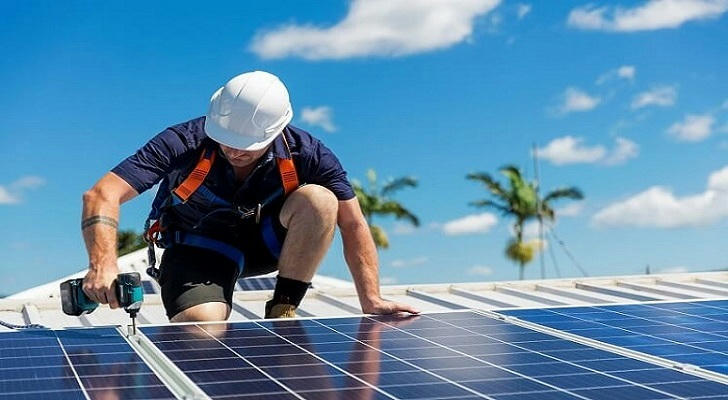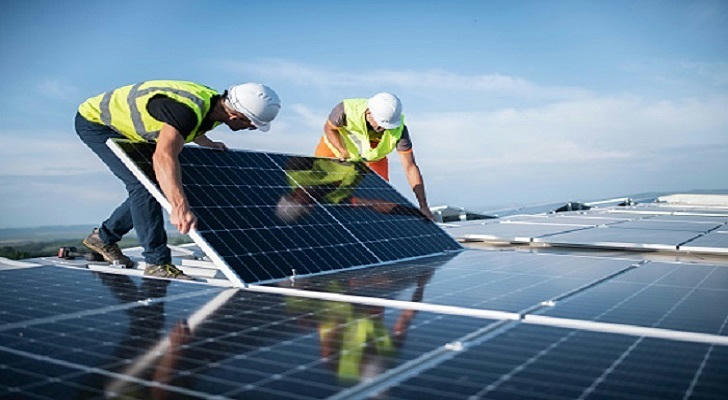The Bright Future of Solar Panel Installation in the US
In recent years, the push for renewable energy has taken center stage in discussions about sustainable development. Among various renewable energy sources, solar power stands out for its accessibility and immense potential. As a result, the demand for solar panel installation professionals in the United States has skyrocketed. This article delves into the growing opportunities in this field, showcasing actual cases, salaries, and installation costs to highlight why now is the perfect time to consider a career as a solar panel installer.

The Solar Boom
The solar energy market in the U.S. has experienced exponential growth. According to the Solar Energy Industries Association (SEIA), the country installed 19.2 gigawatts (GW) of solar capacity in 2020 alone, marking a 20% increase from the previous year. This surge is expected to continue as federal and state incentives, alongside public awareness of climate change, drive residential and commercial sectors to adopt solar technology.
Installation Costs
One of the primary concerns for potential solar energy users is installation costs. On average, installing solar panels in the U.S. can range from $15,000 to $25,000 for a typical residential system, after federal tax credits are applied. However, these prices can vary significantly depending on location, system size, and specific needs. For instance, in California, the average installation cost can be around $2.80 per watt, while in states like Texas, it can be closer to $2.50 per watt. A real-world example can be seen in a recent installation project in Phoenix, Arizona. A homeowner decided to install a 10 kW system, costing approximately $25,000. After taking advantage of state incentives and the federal solar tax credit, the final cost was reduced to around $18,000. The investment is projected to save the homeowner over $1,500 annually on energy bills, leading to a payback period of just over 11 years.

Career Opportunities and Salaries
As the demand for solar energy grows, so too does the need for skilled professionals. The Bureau of Labor Statistics (BLS) projects that employment for solar photovoltaic (PV) installers will grow by 61% from 2020 to 2030, much faster than the average for all occupations. This translates to an estimated addition of over 20,000 jobs in the sector. The salary for solar panel installers is also competitive. As of 2021, the median annual wage for solar PV installers was approximately $47,000, with the potential to earn upwards of $70,000 depending on experience, location, and employer. In states like California, installers can command hourly wages ranging from $20 to $35, often with opportunities for overtime. Not only does this position offer a decent salary, but it also provides stability in a rapidly growing industry.

Skills and Training Required
To thrive in the solar panel installation field, aspiring professionals need a mix of technical skills and practical knowledge. Basic electrical knowledge, familiarity with roofing systems, and the ability to work safely at heights are essential. Many installers start with a high school diploma, followed by on-the-job training or apprenticeship programs. There are also certification programs available, such as those offered by the North American Board of Certified Energy Practitioners (NABCEP), which can enhance job prospects and credibility.
Success Stories
Numerous success stories illustrate the lucrative potential of a career in solar panel installation. Consider the case of John, a former construction worker who transitioned to solar installation. After completing a six-month training program, John secured a position with a local solar company. Within two years, he was promoted to a lead installer role, earning an annual salary of $65,000. His experience not only brought financial stability but also allowed him to contribute to a sustainable future.
The Impact of Solar Energy
Beyond personal success, the impact of solar energy on communities and the environment is profound. By installing solar panels, homeowners reduce their carbon footprint and contribute to a cleaner, healthier planet. As the solar industry continues to expand, it empowers individuals and families to take control of their energy needs while fostering job creation and economic growth.
Conclusion
The solar panel installation industry in the U.S. is on the brink of a revolution, driven by increasing demand, competitive salaries, and a commitment to sustainability. For individuals seeking a rewarding career with long-term potential, becoming a solar panel installer offers an excellent opportunity to be part of the green energy movement. With the right skills, training, and dedication, you can illuminate your future while making a positive impact on the world. Now is the time to seize this opportunity and shine in the solar industry!
